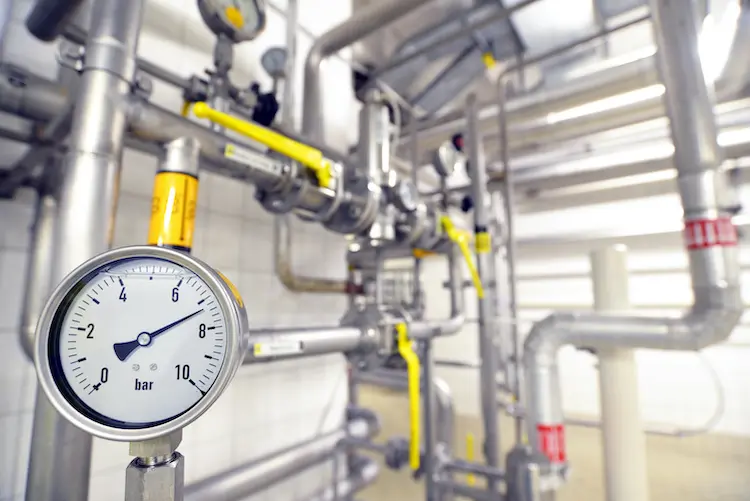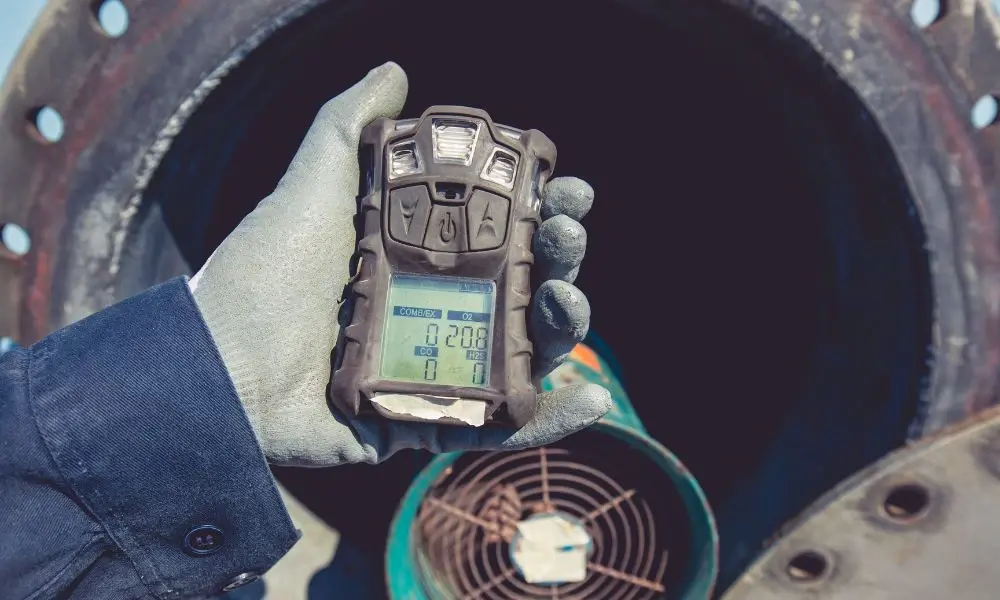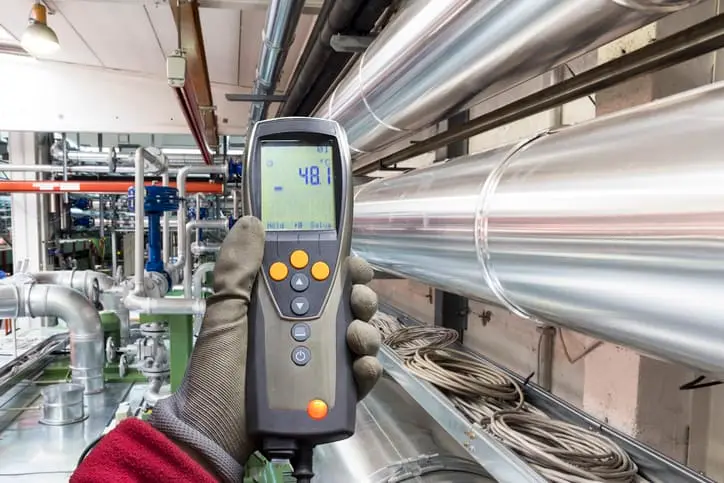Air Quality Testing Technologies for Testing Manufacturing Environment

MFG Enviro Testing incorporation of air quality testing technologies into its product suite and the expertise of its engineers, technical support, and technical sales staff in this domain highlights its commitment to offering a comprehensive suite of solutions for manufacturing environments. This expertise distinguishes MFG Enviro Testing as a trusted partner for manufacturers seeking to optimize air quality, enhance worker safety, and comply with environmental regulations.
State-of-the-Art Environmental Testing Services
Our team of highly experienced professionals utilizes cutting-edge technologies and methodologies to conduct a wide range of environmental tests, including:
Monitor and control emissions
MFG Enviro Testing products provide real-time data on emissions of pollutants like particulate matter, sulfur dioxide, and nitrogen oxides, enabling manufacturers to promptly identify and address emission sources.
Assess indoor air quality
MFG Enviro Testing proficiency in indoor air quality testing assists manufacturers in detecting potential contaminants, such as volatile organic compounds (VOCs) and formaldehyde, and implementing measures to enhance indoor air quality for worker health and productivity.
Conduct source apportionment studies
MFG Enviro Testing expertise in source apportionment studies aids manufacturers in determining the relative contributions of distinct sources to air pollution in the vicinity of their facilities, enabling targeted mitigation strategies.
Investigate worker exposure to hazardous air pollutants (HAPs)
MFG Enviro Testing expertise in workplace exposure monitoring empowers manufacturers to assess worker exposure to HAPs and implement control measures to safeguard worker health.
Develop air quality management plans
MFG Enviro Testing expertise in air quality management planning enables it to assist manufacturers in developing comprehensive plans to reduce emissions, enhance indoor air quality, and comply with environmental regulations.
With its proficiency in air quality testing technologies, MFG Enviro Testing is well-positioned to provide manufacturers with the tools and guidance necessary to achieve sustainable manufacturing practices and protect the environment.
Air Quality Testing Technologies for Testing of the Manufacturing Environment
Ensuring optimal air quality within manufacturing facilities is crucial for safeguarding worker health, maintaining product quality, and complying with environmental regulations. Air quality testing technologies play a vital role in assessing, monitoring, and controlling air quality within these environments. Here’s a detailed overview of the key air quality testing technologies commonly employed in manufacturing:
- Continuous Emission Monitoring Systems (CEMS)
CEMS is designed to continuously monitor and record emissions of pollutants from manufacturing processes, providing real-time data for compliance and process optimization. These systems typically measure emissions of particulate matter (PM), sulfur dioxide (SO2), nitrogen oxides (NOx), and volatile organic compounds (VOCs). The data generated by CEMS is crucial for ensuring adherence to emission limits set by regulatory agencies and identifying areas for emission reduction.
- Ambient Air Monitoring Stations
Ambient air monitoring stations provide valuable information about the overall air quality in the vicinity of a manufacturing facility. They continuously measure ambient concentrations of pollutants such as PM, SO2, NO2, ozone (O3), and carbon monoxide (CO). This data is used to assess air quality trends, identify potential sources of pollution, and inform public health advisories.
- Volatile Organic Compound (VOC) Analyzers
VOC analyzers are specifically designed to detect and quantify VOCs in air samples. VOCs are a broad category of organic chemicals that can harm human health and contribute to air pollution. VOC analyzers play a critical role in monitoring VOC emissions from manufacturing processes, such as painting, adhesives production, and solvent use. These analyzers employ various techniques, including gas chromatography-mass spectrometry (GC-MS) and flame ionization detection (FID), to identify and quantify individual VOC compounds.
- Portable Air Quality Monitors
Portable air quality monitors offer the convenience of real-time air quality measurements on the go. These handheld devices can measure various air quality parameters, including PM, CO2, VOCs, and formaldehyde. They are particularly useful for conducting spot assessments of indoor air quality and identifying potential air quality concerns in specific areas of a manufacturing facility.
- Real-Time Data Management and Visualization Platforms
Real-time data management and visualization platforms collect, analyze, and visualize environmental data from various sources, including CEMS, ambient air monitoring stations, and portable air quality monitors. These platforms provide insights into environmental trends, potential risks, and areas for improvement. They enable manufacturing facilities to make informed decisions regarding process optimization, emission control, and worker safety.
- Artificial Intelligence (AI) and Machine Learning (ML) Applications
AI and ML are increasingly being integrated into air quality testing technologies to enhance their capabilities. AI algorithms can analyze vast amounts of air quality data to identify patterns, predict pollution events, and optimize control strategies. ML models can be trained to detect anomalies in air quality data, indicating potential equipment malfunctions or process disruptions.

MFG Enviro Testing offers air quality testing technologies for testing the manufacturing environment products as shown at
Gas Testers
- Carbon Dioxide (CO2) Analyzers
- Carbon Monoxide (CO) Analyzers
- Natural Gas (CH4) Analyzers
- Nitrogen N₂ Analyzers
- Oxygen Analyzers
- Ozone Analyzers
- Air Pollutant NO Gas Analyzers
- Sulfurous Gas Detector
- Hydrogen Fluoride (HF) Gas analyzers
- Hydrogen Chloride (HCl) Gas analyzers
- Bromine Hydride (HB) Analyzers
- Formaldehyde Analyzer
- Formaldehyde Analyzer
Thermocouple Calibrator and Process Calibrator
Thermal Data Logger
Applications of Air Quality Testing Technologies for Testing of The Manufacturing Environment

- Monitoring Emissions from Manufacturing Processes: Continuous Emission Monitoring Systems (CEMS) are widely used to monitor emissions from various manufacturing processes, such as combustion of fuels, chemical synthesis, and metal processing. CEMS provides real-time data on emissions of particulate matter (PM), sulfur dioxide (SO2), nitrogen oxides (NOx), and volatile organic compounds (VOCs). This data is crucial for ensuring compliance with environmental regulations and minimizing the environmental impact of manufacturing operations.
- Assessing Indoor Air Quality: Portable air quality monitors and real-time data management platforms are essential tools for assessing indoor air quality in manufacturing facilities. These devices can measure various indoor air pollutants, including PM, CO2, VOCs, and formaldehyde. The data obtained is used to identify potential indoor air quality concerns, such as inadequate ventilation, chemical emissions, or mold growth.
- Conducting Source Apportionment Studies: Ambient air monitoring stations and air quality modeling software are used to conduct source apportionment studies, which help determine the relative contributions of different sources to air pollution in the vicinity of a manufacturing facility. This information is crucial for identifying and addressing major sources of pollution and developing effective air quality management strategies.
- Investigating Workplace Exposure to Hazardous Air Pollutants: Air quality testing technologies play a critical role in investigating worker exposure to hazardous air pollutants (HAPs) in manufacturing environments. Personal air sampling pumps and laboratory analysis of air samples are used to assess worker exposure levels to HAPs such as benzene, asbestos, and lead. This information is used to develop exposure control measures and protect worker health.
- Evaluating the Effectiveness of Air Pollution Control Systems: Air quality testing technologies are essential for evaluating the effectiveness of air pollution control systems installed in manufacturing facilities. CEMS and portable air quality monitors can measure emissions upstream and downstream of air pollution control devices, providing insights into their performance and efficiency.
- Supporting Regulatory Compliance and Permitting: Air quality testing data is often required for regulatory compliance and permitting purposes. Manufacturing facilities are obligated to conduct regular air quality monitoring and submit compliance reports to environmental agencies. Air quality testing technologies provide the data necessary to demonstrate compliance with emission limits and air quality standards.
- Optimizing Manufacturing Processes for Environmental Sustainability: Air quality testing data can be used to optimize manufacturing processes for environmental sustainability. By identifying and reducing sources of air pollution, manufacturing facilities can minimize their environmental footprint and conserve energy. This can lead to cost savings, improved public image, and a competitive advantage in the marketplace.
- Developing Air Quality Management Plans: Air quality testing data is essential for developing comprehensive air quality management plans for manufacturing facilities. These plans outline strategies for reducing emissions, improving indoor air quality, and complying with environmental regulations. They help manufacturing facilities prioritize air quality improvement initiatives and achieve sustainable manufacturing practices.
Case Examples of Air Quality Testing Technologies for Testing the Manufacturing Environment
- Monitoring Emissions from a Steel Manufacturing Facility: A steel manufacturing facility in Pittsburgh, Pennsylvania, utilizes Continuous Emission Monitoring Systems (CEMS) to continuously monitor emissions of particulate matter (PM), sulfur dioxide (SO2), and nitrogen oxides (NOx) from its steelmaking processes. The real-time data provided by CEMS enables the facility to ensure compliance with stringent environmental regulations set by the Pennsylvania Department of Environmental Protection (DEP). Additionally, the facility utilizes air quality modeling software to assess the impact of its emissions on the surrounding community and identify potential areas for further emission reduction efforts.
- Assessing Indoor Air Quality in a Pharmaceutical Production Plans: A pharmaceutical production plant in New Jersey employs portable air quality monitors and real-time data management platforms to assess indoor air quality levels within its manufacturing and laboratory areas. These devices measure various indoor air pollutants, including volatile organic compounds (VOCs), formaldehyde, and hydrogen peroxide, which are commonly emitted from pharmaceutical manufacturing processes. The data obtained is used to identify potential indoor air quality concerns, such as inadequate ventilation or chemical emissions from specific production lines. The facility implements corrective actions, such as enhanced ventilation and improved process controls, to maintain a healthy and compliant work environment.
- Investigating Worker Exposure to Hazardous Air Pollutants (HAPs) in an Electronics Manufacturing Facility: An electronics manufacturing facility in California conducts personal air sampling studies to investigate worker exposure levels to hazardous air pollutants (HAPs) such as benzene, toluene, and xylene, which are emitted from various solvents and adhesives used in the manufacturing process. Air samples are collected from workers’ breathing zones and analyzed in a laboratory to determine their exposure levels. The data obtained is used to assess the effectiveness of existing exposure control measures, such as fume hoods and personal protective equipment, and identify potential areas for improvement.
- Developing an Air Quality Management Plan for a Chemical Manufacturing Plant: A chemical manufacturing plant in Texas utilizes air quality testing data to develop a comprehensive air quality management plan. The plan outlines strategies for reducing emissions of particulate matter, sulfur dioxide, and nitrogen oxides from various manufacturing processes. It also includes measures to improve indoor air quality, such as enhanced ventilation and employee training on hazardous air pollutants. The air quality management plan is reviewed and updated annually to ensure its effectiveness in achieving the facility’s environmental goals.
- Monitoring Emissions from an Oil and Gas Refinery in Alberta: An oil and gas refinery in Fort McMurray, Alberta, employs Continuous Emission Monitoring Systems (CEMS) to continuously monitor emissions of particulate matter (PM), sulfur dioxide (SO2), and nitrogen oxides (NOx) from its refining processes. The real-time data provided by CEMS enables the refinery to ensure compliance with stringent environmental regulations set by the Alberta Energy Regulator (AER). Additionally, the refinery utilizes air quality modeling software to assess the impact of its emissions on the surrounding community and identify potential areas for further emission reduction efforts.
U.S. Regulations that MFG Enviro Testing Products Related to Air Quality Testing Technologies for Testing the Manufacturing Environment Comply with
- The Clean Air Act (CAA): The CAA is the primary federal law that regulates air quality in the United States. The CAA sets national ambient air quality standards (NAAQS) for six criteria pollutants: particulate matter (PM), ozone (O3), lead (Pb), sulfur dioxide (SO2), nitrogen dioxide (NO2), and carbon monoxide (CO). The CAA also establishes a system for permitting and regulating major sources of air pollution, including manufacturing facilities.
- The National Emission Standards for Hazardous Air Pollutants (NESHAP): The NESHAP is a set of regulations that establish emission limits for hazardous air pollutants (HAPs). HAPs are a group of air pollutants that are known or suspected to cause cancer or other serious health effects. The NESHAP applies to a wide range of sources, including manufacturing facilities.
- The New Source Performance Standards (NSPS): The NSPS is a set of regulations that establish emission limits for new, modified, or reconstructed sources of air pollution. The NSPS applies to a wide range of sources, including manufacturing facilities.
- The State Implementation Plans (SIPs): SIPs are state-level plans that are designed to meet the NAAQS. SIPs include emission limits, control measures, and monitoring requirements for sources of air pollution.
- The Title V Permit Program: The Title V Permit Program is a federal program that requires major sources of air pollution to obtain a permit. The Title V permit must specify the emission limits and other requirements that the source must meet to comply with the CAA and other applicable regulations.
- The Performance Specifications for Continuous Emission Monitoring Systems of Stationary Sources (40 CFR Part 60, Appendix B): This regulation specifies the performance requirements for CEMS that are used to monitor emissions from manufacturing facilities.
- The Test Methods for Organic and Inorganic Emissions (40 CFR Part 60, Appendix A): This regulation specifies the test methods that must be used to measure emissions of organic and inorganic pollutants from manufacturing facilities.
- The Quality Assurance and Quality Control Procedures (40 CFR Part 60, Appendix F): This regulation specifies the quality assurance and quality control procedures that must be followed when conducting air quality testing.
International Standards that MFG Enviro Testing Products Related to Air Quality Testing Technologies for Testing the Manufacturing Environment Comply with
- ISO 14001:2015 Environmental management systems — Requirements with guidance for use ISO 14001 is an international standard that provides a framework for organizations to establish, implement, operate, maintain, and improve an environmental management system. MFG Enviro Testing should ensure its products align with this standard to demonstrate its commitment to environmental responsibility and sustainable manufacturing practices.
- ISO 8573 Compressed air quality: ISO 8573 is a series of standards that define the quality classes and purity requirements for compressed air used in various industrial applications, including manufacturing. MFG Enviro Testing products should comply with the relevant parts of ISO 8573 to ensure that they provide accurate measurements of compressed air quality.
- ISO 16890:2017 Air filters for general ventilation — Efficiency classification and performance requirements ISO 16890 is an international standard that classifies air filters based on their efficiency in removing particulate matter from air MFG Enviro Testing air quality testing products should be compatible with ISO 16890 classified filters to provide accurate measurements of filter performance.
- ISO 12500:2016 Compressed air filters — Test methods: ISO 12500 is a series of standards that define the test methods for compressed air filters. MFG Enviro Testing products should be validated against ISO 12500 test methods to ensure their accuracy and reliability in measuring filter performance.
- IEC 61000-4-3:2017 Electromagnetic compatibility (EMC) — Part 4-3: Testing and measurement techniques — Radiated, low-frequency electric field emissions 500 Hz to 30 MHz IEC 61000-4-3 is an international standard that specifies the test methods for measuring radiated electromagnetic emissions from electrical and electronic equipment. MFG Enviro Testing products should comply with IEC 61000-4-3 to ensure they do not interfere with other electronic devices in the manufacturing environment.
- IEC 61000-6-2:2005 Electromagnetic compatibility (EMC) — Part 6-2: Generic immunity standard for industrial environments IEC 61000-6-2 is an international standard that defines the immunity requirements for electrical and electronic equipment in industrial environments. MFG Enviro Testing products should comply with IEC 61000-6-2 to ensure they can withstand electromagnetic disturbances commonly encountered in manufacturing facilities.
Customers can use MFG Enviro Testing products such as
Gas Testers
Carbon Dioxide (CO2) Analyzers
- Carbon Monoxide (CO) Analyzers
- Natural Gas (CH4) Analyzers
- Nitrogen N₂ Analyzers
- Oxygen Analyzers
- Ozone Analyzers
- Air Pollutant NO Gas Analyzers
- Sulfurous Gas Detector
- Hydrogen Fluoride (HF) Gas analyzers
- Hydrogen Chloride (HCl) Gas analyzers
- Bromine Hydride (HB) Analyzers
- Formaldehyde Analyzer
- Formaldehyde Analyzer
Thermocouple Calibrator and Process Calibrator
Thermal Data Logger

Get fast shipping on all products!
MFG Enviro Testing delivers overnight to most US & Canada locations from Chicago, IL. Partner with us or learn more by filling out our inquiry form www.mfgenvirotesting.com/inquiry-form/ or emailing us at sales@mfgenvirotesting.com today!
